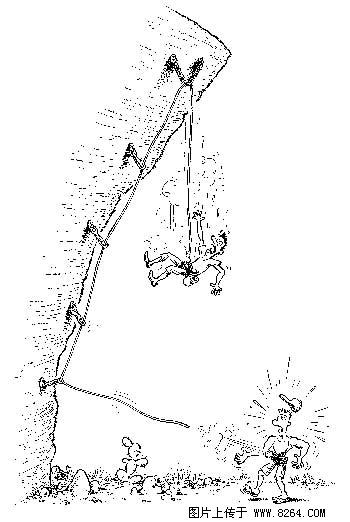| Translated: Climbing Tech Tips 210 Author: Richard M. Wright compile: Zhang Qing Rock climbing is a dangerous sport. Sometimes the disaster occurs on the cleanest route and the simplest operation. It is hard to believe that some experienced veterans can also make tragic mistakes. When we are afraid, hasty or too excited, it is easy to make mistakes. If you are new to rock climbing or feel that you need some reminders, keep the following safety recommendations in mind. Before going wild in the wild, be sure to get the correct guidance. Do not act blindly. Do not think that the techniques you learned in the climbing gym can be directly translated into field operations. Do not assume that your "experienced" partner understands everything you need to know. Before you leave the ground, negotiate a climbing plan with your partner. If you are going to climb traditionally, what do you plan to do when you reach the top? Is it the way to go down the hill and come down, or let the partner put you down? Is the rope enough to get you back to the ground? Even if you are climbing a top rope, you should communicate the details in advance. Many accidents happen because there are no clear plans at the beginning.  Add side protection to your protection system and never deliver your life to a separate point of protection. Rather than less, add more weight to your protection system. In case something goes wrong with a part, there are always other things that can save you. For example, the top rope protection system must not use only one protection point. Even if it is an expansion nail, you have to connect the two protection points together to work together. Do not hesitate to equip the equipment. If it is an SPORT route, two quick links instead of one should be used at the end of the line. In addition, this concept is also reflected in the mutual inspection of seat belts, knots and protectors before the climb. Use your own equipment instead of the inherent protection point to set up the top rope. Repeated whipping of the rope will wear out the protection point. If you use your own fast hanging or flat belt and main lock to set up the top rope protection point, you will extend the life of the intrinsic protection point and make some contribution to the later. In the same way, self-decline is more conducive to your rope and protection point than letting your partner put you down. Before going down, check the protection system. If it's your companion who lets you down, let him tighten the rope first, let your weight fall on the rope instead of directly on the protection point, and then you will unlock yourself from the protection point; if you drop yourself, then Tighten the rope yourself. This procedure is to make sure that the rope is correctly passing through the protection system and is properly connected to you. At the same time, check the protection points and the protection system. If they do not appear to be indestructible, add some protection. More exchanges with partners. Rock climbing is a project that requires teammates to collaborate. If you do not speak or shout, then create other forms of communication, such as pulling the rope, to send a clear message to your partner. Similarly, prior to climbing, there must be agreement on the means of communication. If you are not sure, do not do it. If you cannot make sure that you can safely untie the knot and reattach it, do not attempt to complete the operation of passing the master rope through the protection point. If you are not sure that you can safely descend, do not drop. You may wish to be humble and acknowledging that you need help. It is much better than taking a life risk. May 2003 Translation Original source: v7plus.com |
Sprayer Bottles, Cosmetic Container, Cosmetic Bottles, Trigger Spray Bottle
Zhenghao Plastic Packaging Co., Ltd. , http://www.jessro-plastic.com
